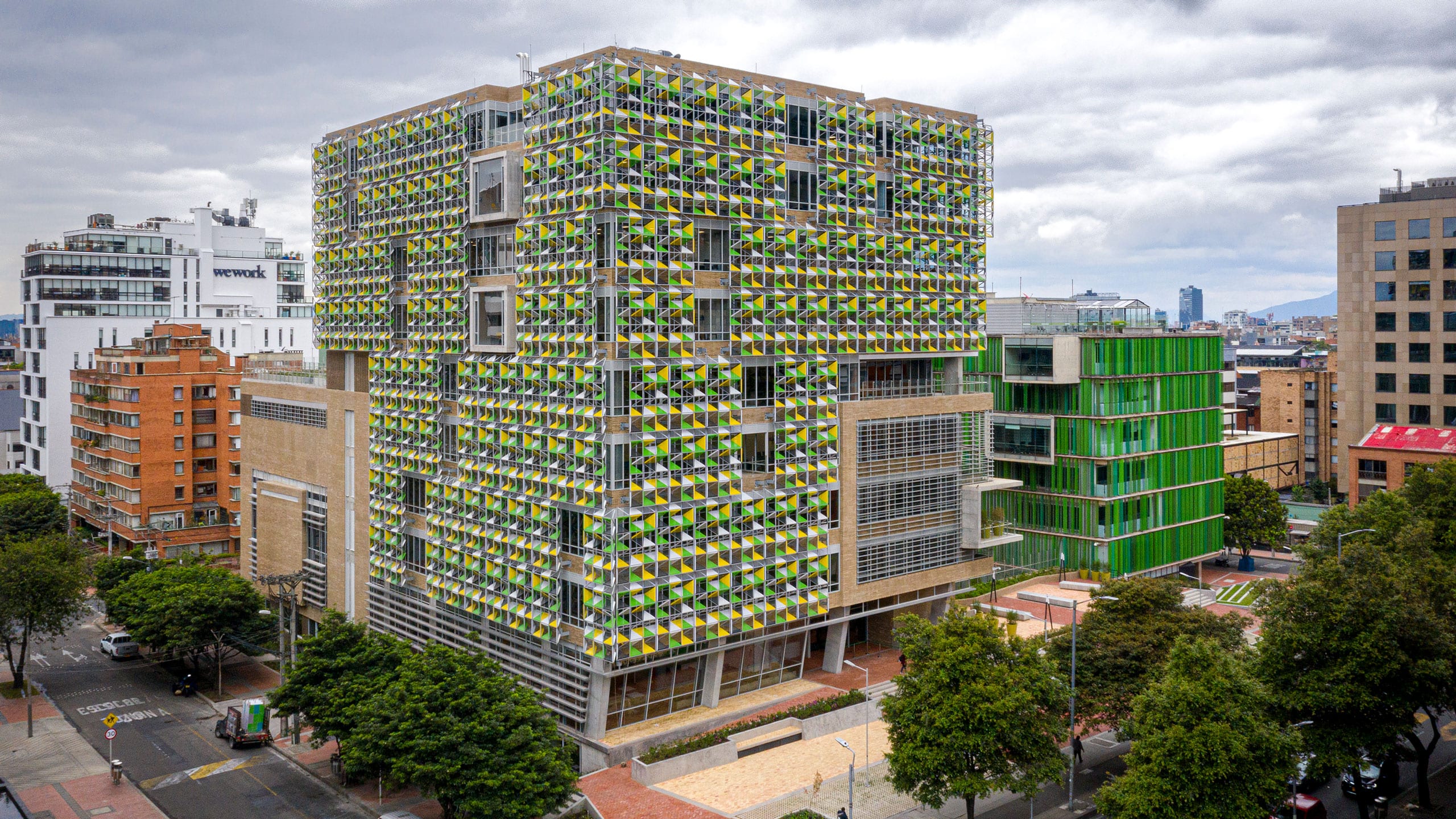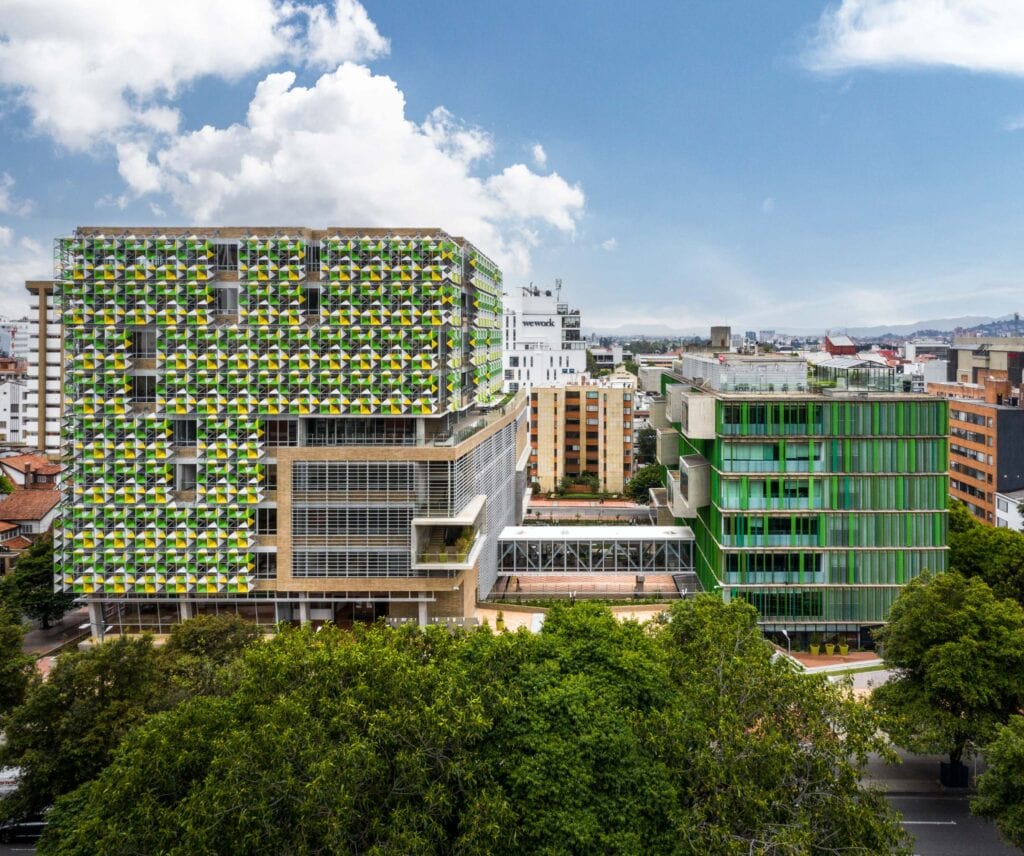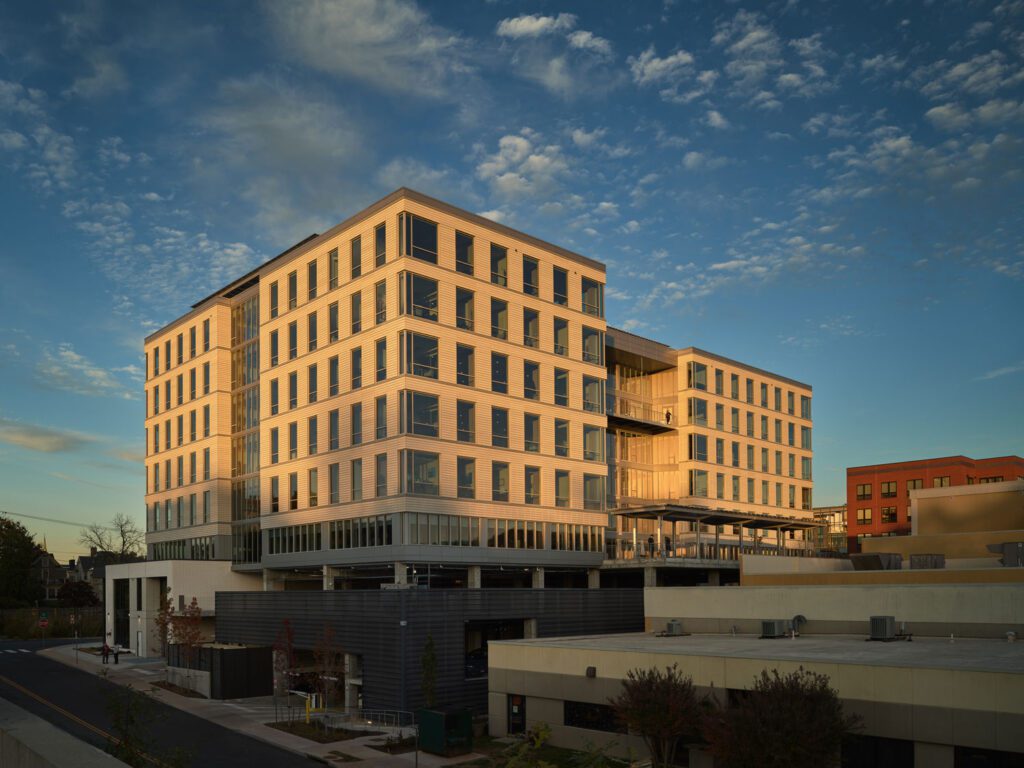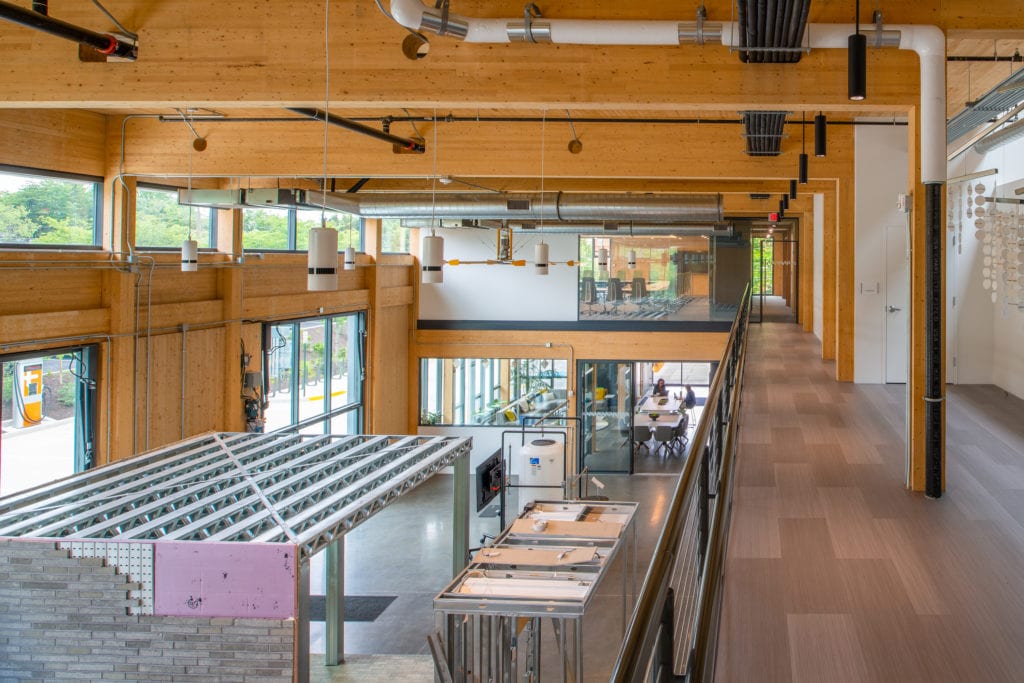CHARLOTTESVILLE, Va., May 13, 2021 /PRNewswire/ — William McDonough + Partners celebrates the opening of “Project Legacy,” the landmark 20,000 square meter building designed by William McDonough + Partners for Universidad EAN (UEAN) in Bogotá, Colombia. Standing as a new icon for the city, and a beacon of sustainability in the Americas, the University’s new center for technology and entrepreneurship was created through regenerative, circular economy-inspired innovations in architecture and construction, materials sourcing, and collaborations across the country.
“As an architect, I have often wondered how buildings can align with Arthur C. Clark’s statement: ‘any sufficiently advanced technology is indistinguishable from magic.’ To me, the EAN building is magical,” said William McDonough. “We designed this school to be like a living, breathing organism, native to and a part of its environment. The design elements that make up the building mirror the ambitions of the small and medium-sized entrepreneurs learning how to design and execute business plans guided by Cradle to Cradle and the Circular Economy. What an astonishing privilege to have a building that embodies the principles of the actual pedagogy that is taught in the university’s curriculum.”
Instruction in the building will center on Cradle to Cradle and Circular Economy principles, but Project Legacy has already become a “living lab” for sustainability, and has proven, in conjunction with the University, the City of Bogotá, and local construction and building materials industries, that green building projects can support Circular Economy ecosystems.
The most prominent feature of the design is the structure’s WonderFrame™ shade structure, a perpetually reusable and/or recyclable space-frame-like installation devised by William McDonough. Constructed by a local Hunter Douglas factory, the UEAN WonderFrame is a modular, multi-functional building system designed for quick assembly and constructed of commonly available materials. The metal frame is clad with multi-colored perforated panels, metaphorically invoking tree leaves. These triangular panels provide shade while simultaneously admitting daylight, demonstrating both material and energy efficiency. Covering roughly 85% of the façade, the WonderFrame stands as the largest installation of this modular building system to date. Window glazing was chosen for energy effectiveness as well as high acoustic control.
Further, the WonderFrame facilitates natural ventilation, capitalizing on existing wind currents to direct filtered air into the building and out its iconic chimneys. The technique sharply reduces the need for mechanical ventilation, and together with the window glazing, is responsible for nearly 40% of the anticipated 575 MWh annual energy savings. The innovation also makes Project Legacy the world’s first building to qualify for a new LEED Alternative Compliance Path (ACP) for naturally ventilated projects, intended for equatorial countries with temperate climates.
Project Legacy also became an exercise in Circular Economy thinking throughout the construction process. Thoughtfully managed site demolition resulted in the nation’s most successful material recovery effort to-date, with more than 99% of the construction debris — some 50,000 tons — diverted from landfills for reuse, proving that commercialization of post-consumer recycling can benefit the Colombian construction industry. “Instead of spending $80,000 in disposal fees, we received $55,000 for our residue,” said Miguel Orejuela Duarte, the project leader for Universidad EAN.
And, in a joint effort by the team and University EAN, building material suppliers were required to conform to a matrix of project sustainability standards. Called RISE EAN, or “Route for Innovation and Sustainable Entrepreneurship,” the matrix evaluated companies’ sustainable practices and became part of a set of requirements for vendors. RISE EAN identified 28 companies fitting its criteria, and helped improve the practices of 14 manufacturers. One of those companies was Acemar, which provided FSC Certified wood veneer panels for the building. Thanks to RISE EAN, Acemar ultimately achieved Cradle to Cradle Certified™ Bronze for their product — a first in Latin America.
Additionally, and in a close partnership with the city of Bogotá, Project Legacy’s Cradle to Cradle-inspired design realized new green building incentives and incorporated municipal benefits to extend the building to the city. Project Legacy became the nation’s first project financed by lower-interest green financing, and the first to benefit from energy efficiency tax incentives. Further, by incorporating 1600 square meters of public space on the building grounds, the city permitted three additional stories of construction.
“At Universidad EAN, we have truly embraced a Cradle to Cradle approach to Project Legacy,” said Herbert Perico Crissien, President of the Board, Universidad EAN. “As a result, and through the creative thinking and innovation that helped this project succeed, Project Legacy has itself become a lesson in the tremendous potential that comes in framing design, engineering, business and finance challenges within a circular economy framework.”
“This building represents the hard work of hundreds of people, and most especially Herbert Perico and the University,” said McDonough. “Their vision and leadership enabled us to bring Project Legacy to life while inspiring new ways to design for all the children of the world, for all time.”
Building Features:
- Natural ventilation for the new building aided through solar chimneys, which draw air through the building and exhaust it at the roof.
- Operable windows and balcony doors are featured on all facades, ventilation air is primarily supplied through filtered grills above the windows.
- Zones along the main interior street provide mechanically ventilated and filtered air when outdoor air quality and ambient noise levels require it.
- The building is one of the first to implement a new Verification Protocol for Engineered Natural Ventilation Systems in Equatorial Climates, developed by Bogotá-based environmental engineering consultants (and design team members) for the Colombia Green Building Council to standardize the use of natural ventilation as a LEED energy effectiveness strategy.
- The new building provides classrooms, administration offices, seminar rooms and special function rooms, including a cafeteria, indoor basketball court, exercise gymnasium, and a 500-seat auditorium. A large ground level plaza and exterior terrace at the sixth floor provide ample opportunity for outdoor use in Bogotá’s mild climate. Triplex Acemar S.A.S. achieved Cradle to Cradle Bronze V3.1 certification for their Linea Domus (wood veneer panels) product line and Cradle to Cradle Basic V3.1 certification for Linea Supreme (wood faced doors). Linea Domus panels were used in the building’s atrium and auditorium, and were supplied to a seating manufacturer for the auditorium chairs.
- Hunter Douglas Colombia was responsible for refinement and fabrication of the WonderFrame(™)
The design team included Universidad EAN as construction manager, AIA as the executive architect, and AEI for interior design. PAYC was the general contractor.
Additional collaborators included Eco Intelligent Growth (EIG)[materials consulting], Acustec [acoustics], ADRAR [civil, plumbing], AGR [life safety], Aqualab [laboratory], Gaia [landscape], HVAC Consulting [HVAC], MTS [lighting], Natural Cooling [natural ventilation], PyP Proyectos [structural], SETRI [LEED], and SES [energy modeling].
The building achieved LEED Gold certification, and is among the first academic buildings in Colombia to be LEED certified.
William McDonough + Partners is looking forward to new opportunities elsewhere in Colombia and Latin America. For more information on William McDonough + Partners and the UEAN project, please visit McDonoughPartners.com/projects/Universidad-EAN.
About William McDonough + Partners
William McDonough + Partners is an architecture and urban design firm that applies a positive, principled design philosophy inspired by Cradle to Cradle—an approach that takes its cues from living systems and processes and seeks to expand on enduring standards of design quality. William McDonough’s interests and influence range widely, and he works at scales from the global to the molecular. He is recognized globally as a leader in sustainable development and was the Inaugural Chair of the World Economic Forum’s Meta-Council on the Circular Economy (2014-2016). He currently serves on the Forum’s Global Future Council on the Future of Environment and Natural Resource Security. In 2017, he received the Fortune Award for Circular Economy Leadership at the World Economic Forum’s Annual Meeting in Davos, where he was introduced as “the father of the circular economy.”
Recent and current projects include: NASA’s Sustainability Base office building at Moffett Field, California, viewed by NASA as a “prototype of a 21st-century building”; the Park 20|20 Master Plan near Amsterdam, and the architectural design of several corporate offices at Park 20|20; and Hero MotoCorp’s new “Garden Factory” in Neemrana, India, as well as their new Research & Development Center in Jaipur, India. The firm is also master architect for The Valley at Schiphol Trade Park, The Netherlands’ new National Hub for the Circular Economy.






